From the microscopic to the colourful, delicious, weird and downright disgusting, fungi come in many shapes and forms. Given that mushrooms mostly grow in soil, you could be forgiven for thinking that fungi are related to plants. However, fungi are actually more closely related to animals than they are to plants. This is because, like us, fungi get their energy by breaking down carbon-based compounds present in their environment, rather than through photosynthesis.
Humans have consumed mushrooms for hundreds of thousands of years. Even if you are not a fan of eating mushrooms, they are still appreciable for a variety of reasons. We use yeasts, a type of fungus, to make bread rise and for brewing alcohol. Yeasts are also used to produce useful chemicals, such as insulin and antibiotics. There are even fungi that have the ability to break down plastics. Fungi are an important part of our ecosystems, because they break down decaying plant matter and animal waste. Without fungi, we would not have soil to grow food.
For most of us, mushrooms are the most familiar type of fungi, but not all fungi produce mushrooms.
For most of us, mushrooms are the most familiar type of fungi, but not all fungi produce mushrooms. Of the estimated 5 million species of fungi, there are about 14,000 mushroom-producing species described. Also, the mushroom is not the whole story. What we see above ground is actually just the reproductive structure of the fungus. The rest of the fungus is typically below ground, or inside decaying wood, where it forms a much larger network, called a mycelium. Millions of smaller, interconnected cells called hyphae, make up this network. If you have ever picked a mushroom and noticed a white fluffy material around its base, you have seen part of the mycelium. The scientific name for a mushroom is the ‘fruiting body’, which usually contains millions of spores. Spores are transported by wind, water or animal activity to a new location, where they form a new mycelial network and produce more fruiting bodies.
New Zealand has a fascinating mix of native, endemic and introduced fungi. Because many fungi grow in association with plants, when various plants were introduced to New Zealand, fungi were introduced along with them. Examples are the edible birch boletes, and the invasive fly agaric, which grows in association with pine trees. Aotearoa also has many unique species of fungi. By a rough estimate, 1 out of 8 endangered native NZ species is a fungus. Many people will recognise Entoloma hochstetteri/ werewere-kōkako, the blue fungi featured on the $50 note, but there are countless other native species to discover.
By a rough estimate, 1 out of 8 endangered native NZ species is a fungus.
Generally, the best time to search for mushrooms is in the days after rainfall, especially in the autumn and winter months. In some areas, such as the West Coast of the South Island, mushrooms can be found easily all year round. Some mushrooms are very short lived, lasting only days or hours. Others can live for a long time, up to 20 years! The following are some examples of mushrooms I have found recently, in various parts of New Zealand. With a bit of practice, patience, and a sharp eye, these and hundreds of other species are only a foray away.
A note on foraging for mushrooms: While many species are edible, there are also poisonous look alikes and many are hard to identify. Consult a field guide or mushroom expert before consuming any species. Mushrooms are perfectly safe to touch, just wash your hands afterwards.
Orange pore fungus/ Favolaschia calocera
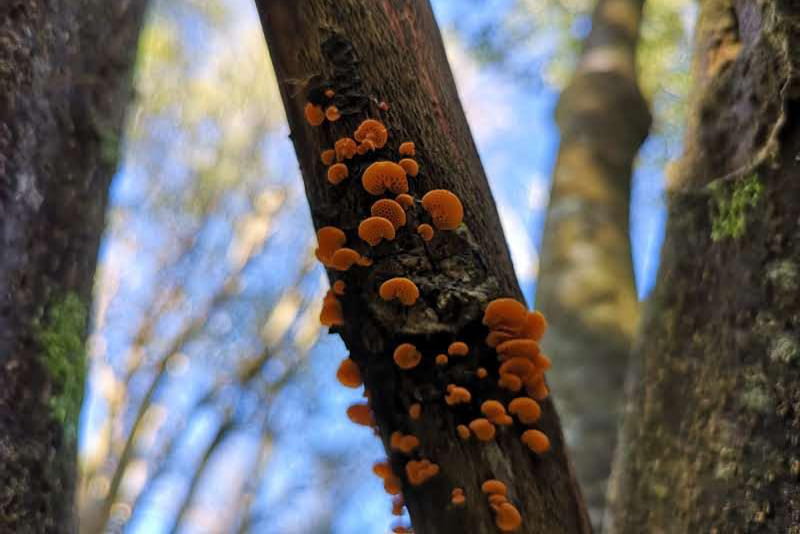
The orange pore fungus is a small species ranging in size from 5-30mm. F. calocera has an intricate and symmetrical arrangement of pores on its underside. This species was first observed in Madagascar, but has since spread to Australasia and Italy. Although an attractive mushroom, F. calocera is considered invasive in New Zealand, and may be displacing native fungi.
Vermilion waxcap/ Hygrocybe miniata
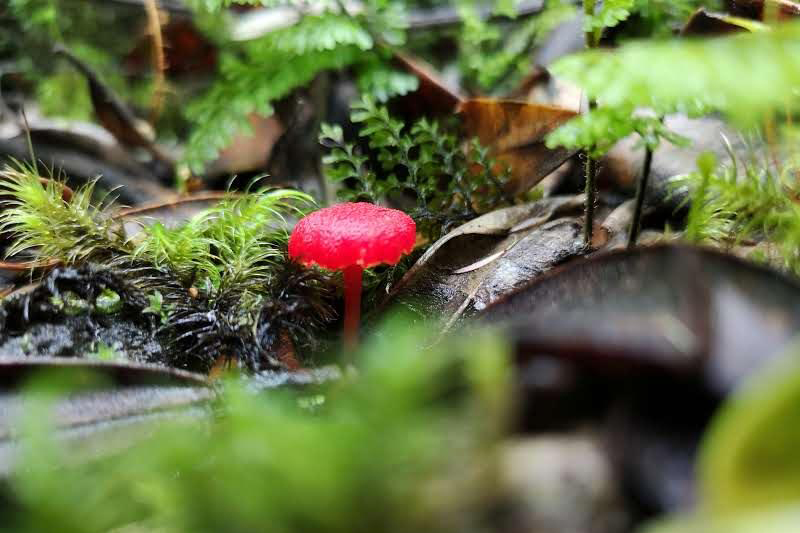
H. miniata is a cosmopolitan species that grows well in a range of different habitats across the world. In New Zealand forests, its bright red colour, which fades to orange as the mushroom ages, makes it easy to spot in a mossy environment. Unlike other red waxcaps, H. miniata has a roughened texture.
Robust bracket/ Fomitiporia robusta
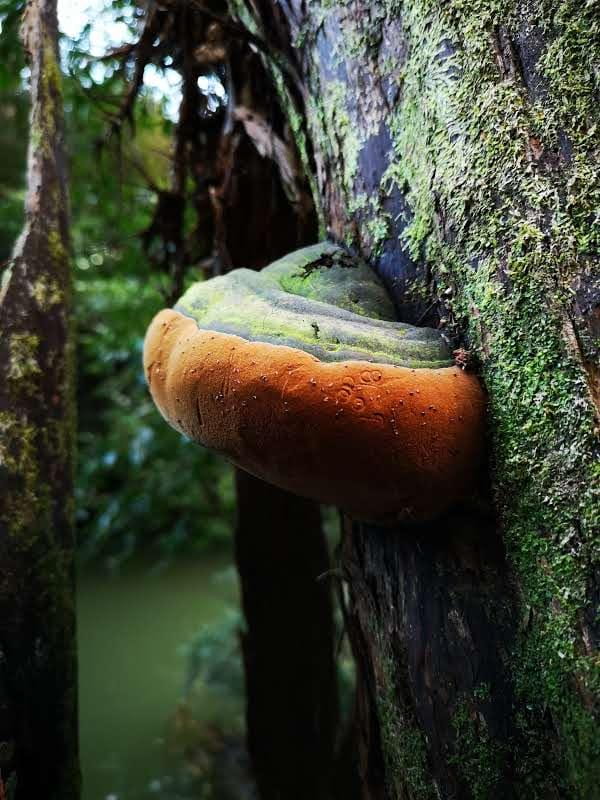
When searching for fungi, remember to look up! The robust bracket grows on dead and living trees, often at great heights, where it secretes digestive enzymes into the wood, breaking down lignin and cellulose for energy. The fruiting bodies (aka the “bracket”) of F. robusta are incredibly long-lived, reaching 15-20 years. This species is woody and hard, and its brown undersides have a velvety texture.
Hare’s foot inkcap/ Coprinopsis lagopus
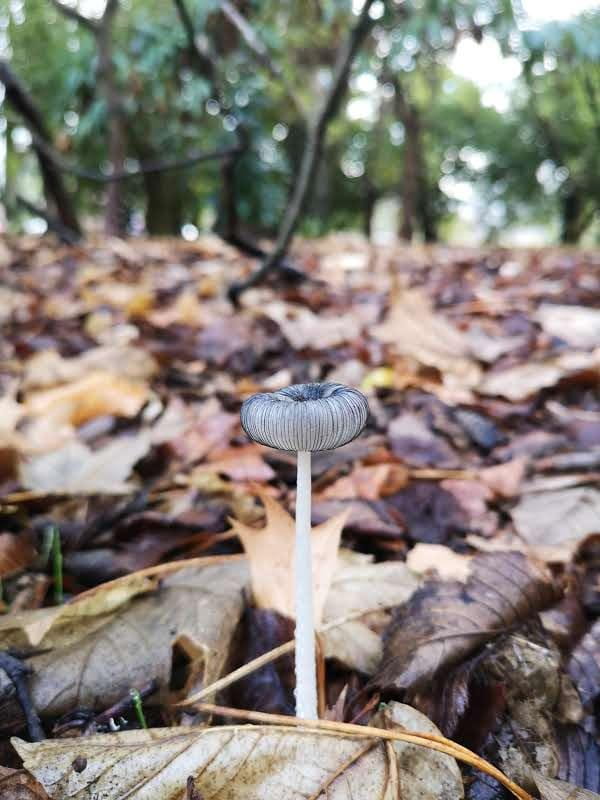
The hare’s foot inkcap gets its name because, like a startled hare, the fruiting bodies of this species are not around for very long. In fact, this mushroom lasts only a few hours. As it ages, the gills curl upwards and the cap sheds its spores. The best place to find C. lagopus is in untreated wood chips after rainfall.
Velvet foot/ Flammulina velutipes
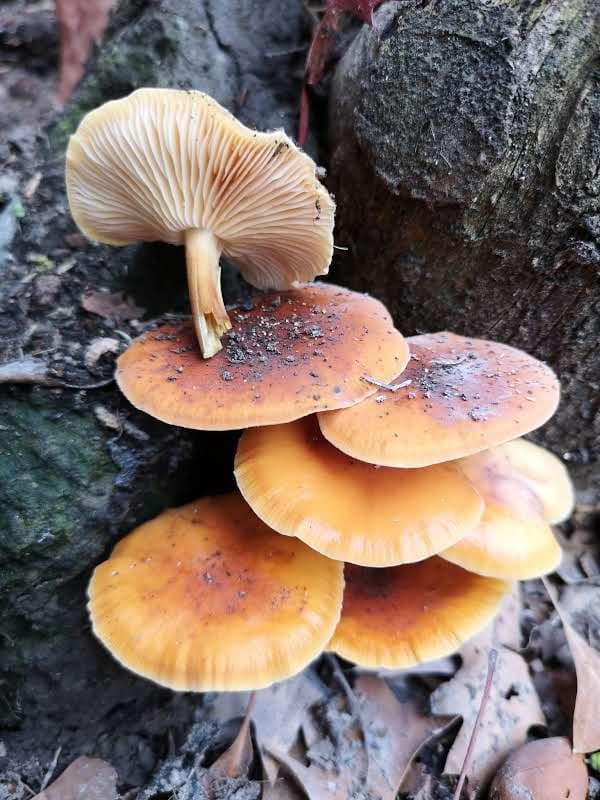
The velvet foot is a wild version of the Japanese cultivated enoki mushroom. In Japan, this species is prized for its flavour. F. velutipes is found worldwide, although its appearance can vary widely. This species grows towards the light so it can release its spores into the wind, rather than inside a log, but cultivated enoki mushrooms are deliberately grown in the dark, giving them an elongated shape and pale appearance.
Ear fungus/ Auricularia cornea

A. cornea grows on dead wood, and can be found anytime after rain. The cups shrink in dry weather, but can absorb water and expand after rain. Edible and considered delicious by many, this species is used in Chinese cuisine and was even grown for export to China from the late 1800s until the 1960s. As per its name, A. cornea has a fleshy texture and an ear-like appearance.
Far south Amanita/ Amanita australis
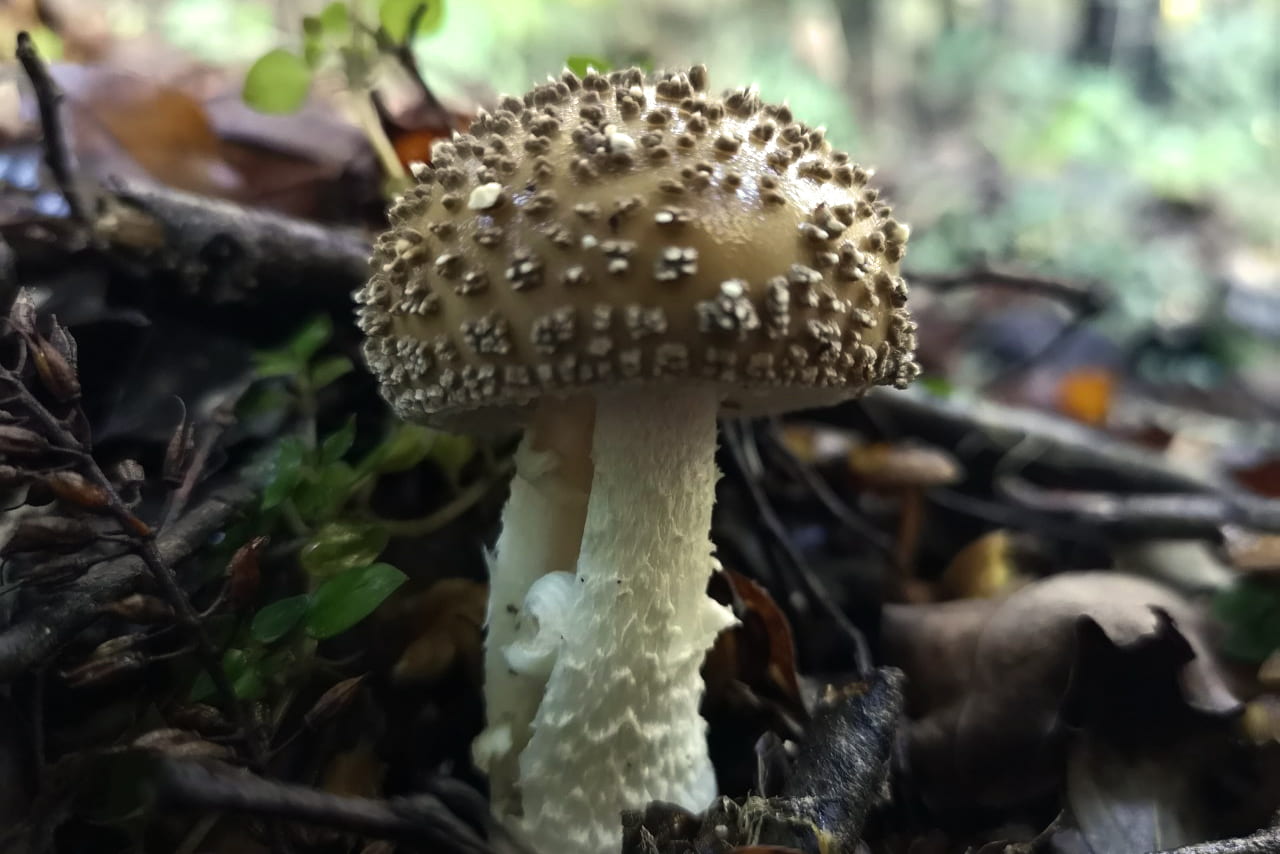
A. australis grows in the soils of southern beech and manuka forests. This species is a close relative of the invasive fly agaric, which many people will recognise as having a red cap with white wart-like markings. Like the fly agaric and other Amanita sp., the far south Amanita is poisonous, but unlike the fly agaric, A. australis is found only in New Zealand.
Potato fungus/ Rossbeevera pachydermis
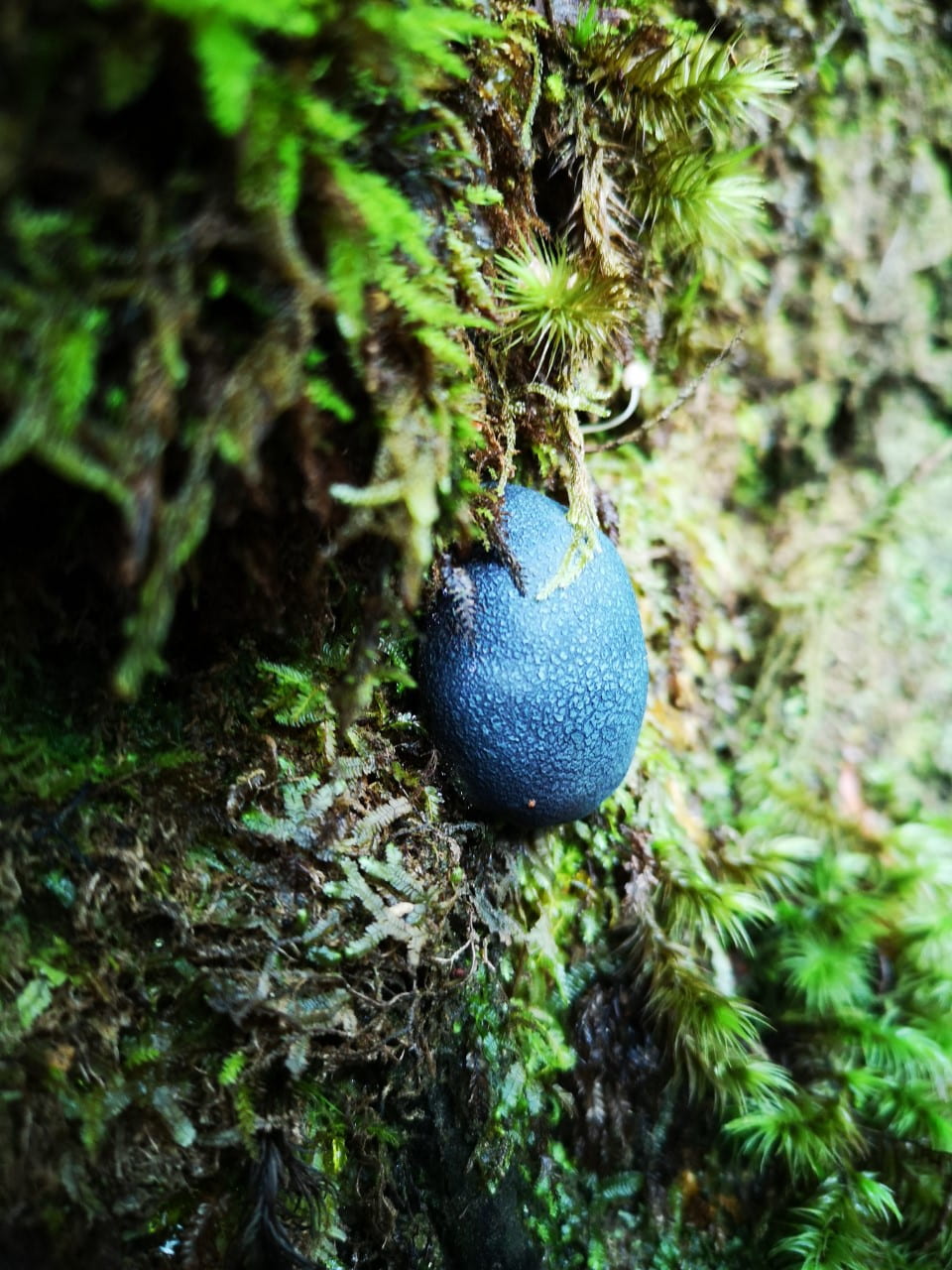
Also known as the potato fungus, R. pachydermis is native and endemic to Aotearoa. This species grows only in beech forests, and is most commonly found partially buried in the ground. The fruiting body starts out white and stains blue as it ages, while the inside is dark brown, with an unpleasant smell. Although an unusual sight, this species is relatively common during the autumn months.
Black tooth/ Phellodon sinclairii
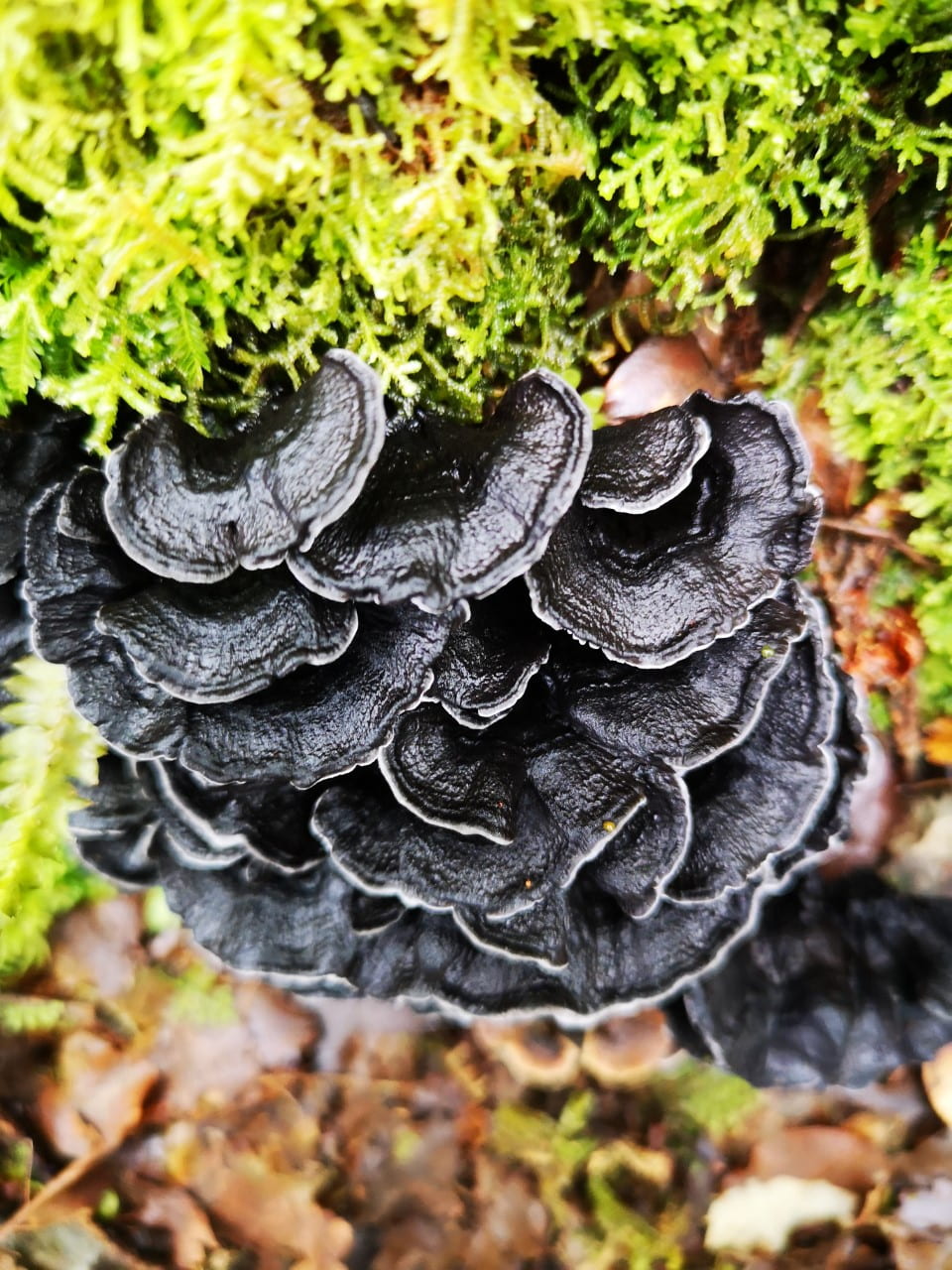
P. sinclairii is another native and endemic fungus, also growing in beech forests. The colour is a rich black with a white margin, which becomes grey as the fruiting bodies age. Due to their sensitivity to air and soil pollution, species of the Phellodon genus are in general decline worldwide.
Purple pouch fungus/ Cortinarius porphyroideus
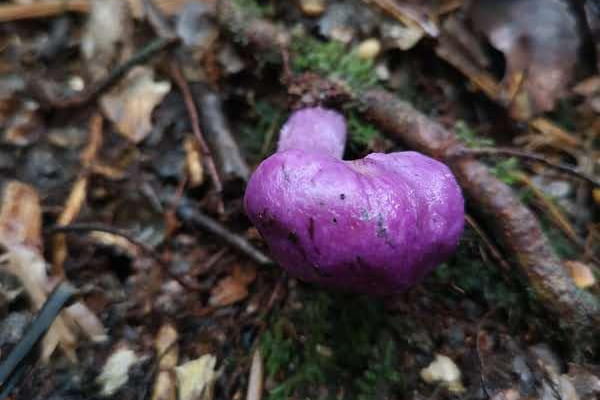
The fruiting bodies of C. porphyroideus are bright violet, growing in beech forests of Australia and New Zealand. This species is an example of a secotioid fungus. Secotioid fungi have a characteristic pouch shape, with the gills partially or completely inclosed. These species rely on insects, which eat parts of the fruiting body and carry its spores to new locations. The purple pouch fungus was featured on a series of postage stamps depicting native New Zealand fungi, released in 2002.
Wooly bird nest/ Nidula niveotomentosa

Like all bird’s nest fungi, N. niveotomentosa is very small, forming cup-like structures about 5mm across. This species grows on damp wood, and the outsides of the cups have a wooly texture. The brown egg-like discs, called peridioles, contain the spores. The peridioles develop inside the cups, underneath a covering. When the cup has matured, the covering cracks open. During the next rainfall, if a raindrop hits the inside of the cup at the right angle, the eggs are ejected from the nest and can land a considerable distance away. The spores inside the peridiole then germinate, beginning the life cycle again.
Octopus Stinkhorn/ Clathrus archeri

While a great number of fungal species have been introduced to New Zealand, a few have also spread from our shores to other countries. The octopus stinkhorn is one example. Indigenous to New Zealand and Australia, C. archeri is now found in Europe and North America, and is thought to have spread during the mass-movements of World War I. Stinkhorn fungi have an odour like rotting meat, attracting flies which carry and distribute the spores.
—-
Sophie van Hamelsveld is a PhD student in the School of Biological Sciences at the University of Canterbury. Her research is centered around antibiotic resistance in freshwater and mahinga kai. In her free time, Sophie likes to go walking and tramping, which usually involves finding lots of fungi.
Follow Sophie on Instagram, where she finds, photographs and identifies fungi in Aotearoa.













